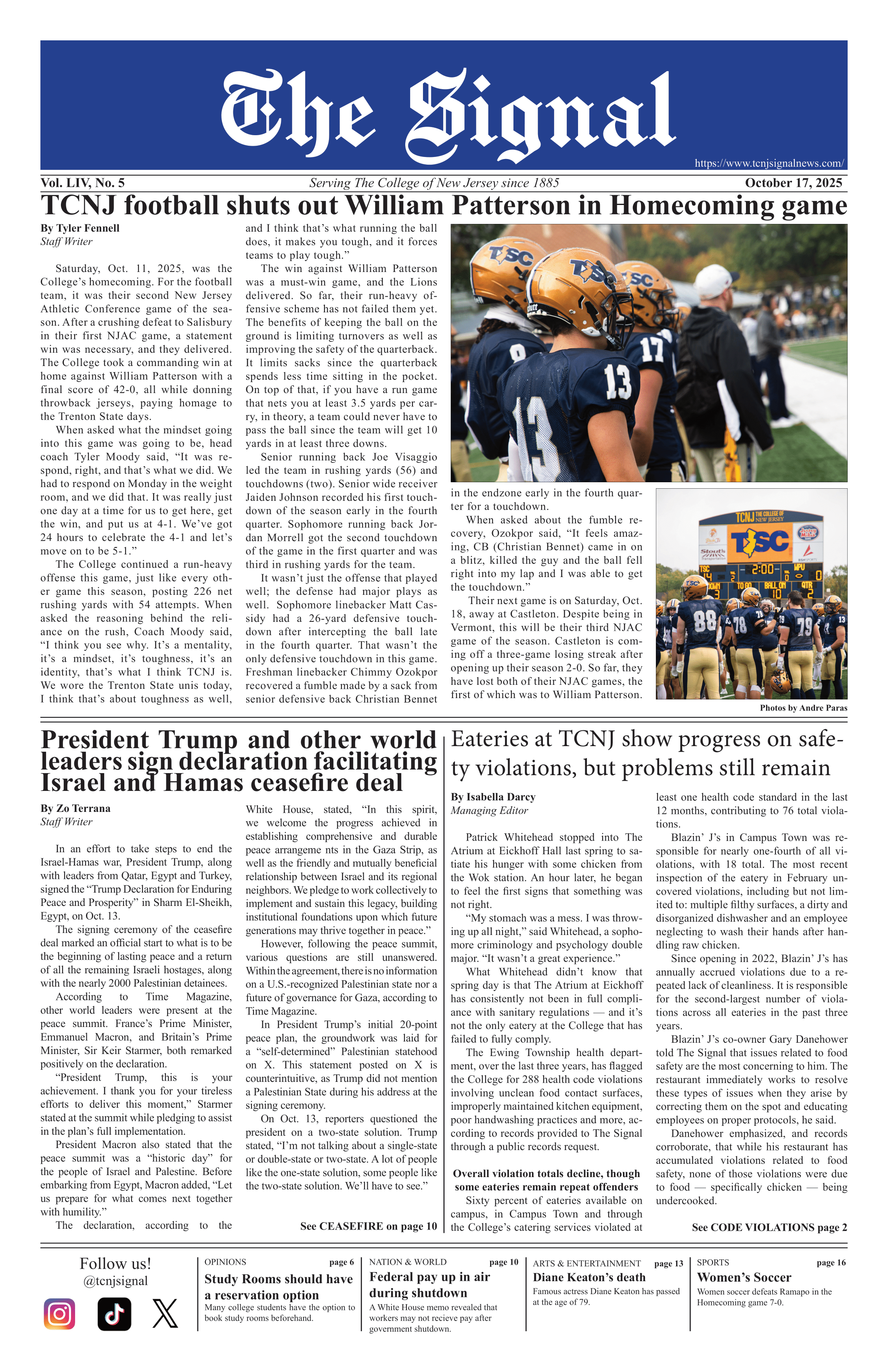By Gabrielle Beacken
News Assistant
The College’s Campus Climate survey results, which measures levels of comfort and confidence in the College’s campus environment from answers given by faculty, staff and students, were released this week, representing a shockingly low participation percentage from the student body.
The highly anticipated results of the survey, which was distributed in the fall 2013 semester, were expanded upon in a presentation by Climate Survey coordinator and analyst Susan Rankin on Monday, Sept. 8, in Mayo Concert Hall.
“It is important to have research support what you do,” Rankin said of the survey.
But the survey included only about 8 percent of student participation, according to Rankin and her analytical team. As Rankin referred to this percentage as “abysmal,” there were moans throughout the audience, indicating disappointment in the oddly small number of student participation. Rankin additionally referred to the student response rate as “one of the lowest we’ve ever heard of.”
The highest percentage of student participation the organization has ever received was 86 percent. Though Rankin does not encourage offering incentives to take the survey, she said that many schools do, therefore resulting in high student participation.
According to the survey, a majority of students, faculty and staff offered very positive responses. Altogether, the results indicated that the campus environment was all-around positive, according to Rankin.
The survey included questions about the participants’ gender, sexual orientation, health, race, job position and more. Even though student participation was unfortunately low, 31 percent of staff and 38 percent of faculty participated.
According to the Survey, 76 responders were white, while only 8 percent of responders were black, 8 percent Hispanic or Latino, 6 percent Asian and 2 percent other. More women than men offered survey responses, as well. Although there is no “normal” standard, this tends to be the case among genders, according to Rankin. In the limited student response rate, a similar number of students across all years responded.
Rankin also told the audience to avoid saying blanket statements such as, “There is no sexism, there is no racism here on campus,” for they can be offensive and misleading.
“Given the prevailing culture in our country, TCNJ can be a safe haven, but it can never be a perfect safe haven,” English professor and chair of the English department Glenn Steinberg said. “We can never completely protect our own from outside cultural influences that may not be as open and welcoming as we want to be.”
The survey illustrated that white students felt more comfortable on campus than students of color, while heterosexual students felt more comfortable than LGBTQ students. The survey additionally reported that 45 percent of students experienced unwanted physical sexual contact. Rankin emphasized that unwanted physical sexual contact seems to be an unfortunate theme on college campuses.
“Our job is, in the short run, to make TCNJ the best safe haven that it can be for everyone and, in the long run, to transform the prevailing culture to eliminate discrimination,” Steinberg said.
The College’s classroom climate, according to the survey, was very positive. Eighty-two percent of students and 88 percent of faculty who participated in the survey reported a “very comfortable” class setting. The survey also expressed that one of the dominant reasons faculty stay at the College and enjoy teaching is because of the students.
“TCNJ is already a unique school,” Rankin said.
Steinberg was also impressed.
“I think the news from the climate survey was very good,” said Steinberg. “Most people here at the College feel comfortable and welcome. That’s good news.”
But there are still issues to be resolved and progress to be made.
Steinberg noted that while overall climate is positive, the College has the potential to have an even more comfortable and welcoming atmosphere — a goal that will come with its challenges.
“It’s difficult to plan concrete ways to improve conditions when conditions are basically good,” Steinberg said. “It’s like a student who is doing ‘A-’ work and wants to get an ‘A.’ That last hump from (an) ‘A-’ to ‘A’ can be very, very challenging.”
The Campus Climate Survey process included three phases: Assert Tool Development and Implementation, Data Analysis and Final Report/Presentation.
Even though there are always improvements to be made and progress to initiate, the highly positive climate report is an indication of the College’s efforts to create a comfortable and educationally stimulating environment for it’s staff, faculty and students.
“I commend President Gitenstein and the Provost for taking an active interest in doing what they can to make the climate on campus as welcoming and comfortable for all as possible,” Steinberg said.
Rankin is part of Rankin & Associates Consulting, an association that concentrates on “assisting educational institutions in maximizing equity through assessment, planning and implementation of intervention strategies via the Transformational Tapestry,” according to the organization’s webpage.
“This is very much about being action-oriented,” Rankin said to an audience mostly composed of faculty and staff. “We’re taking information from this and creating actions that work.”






